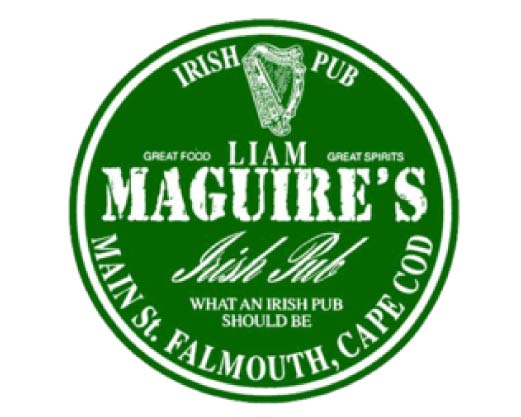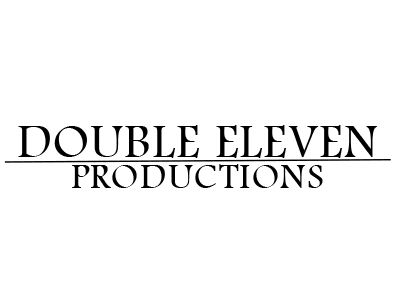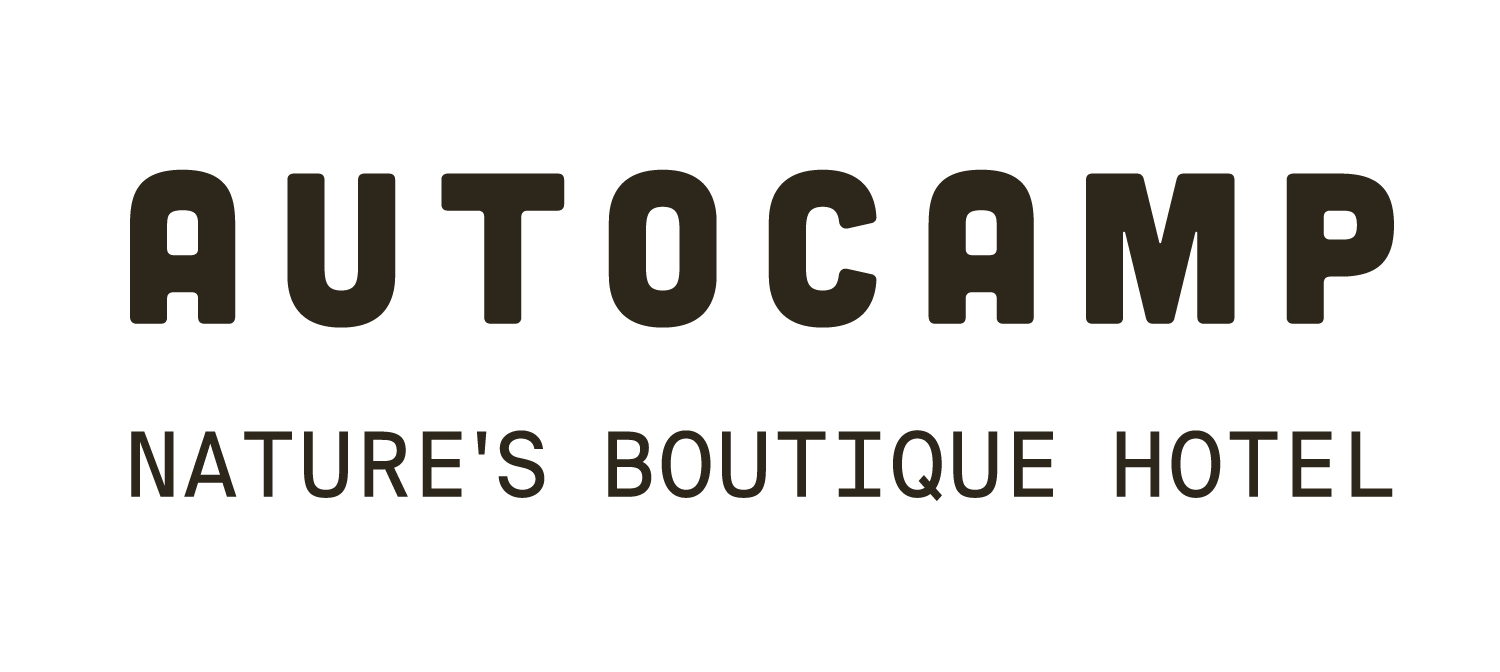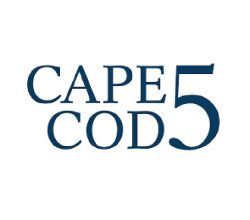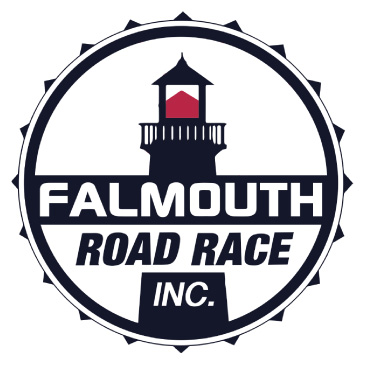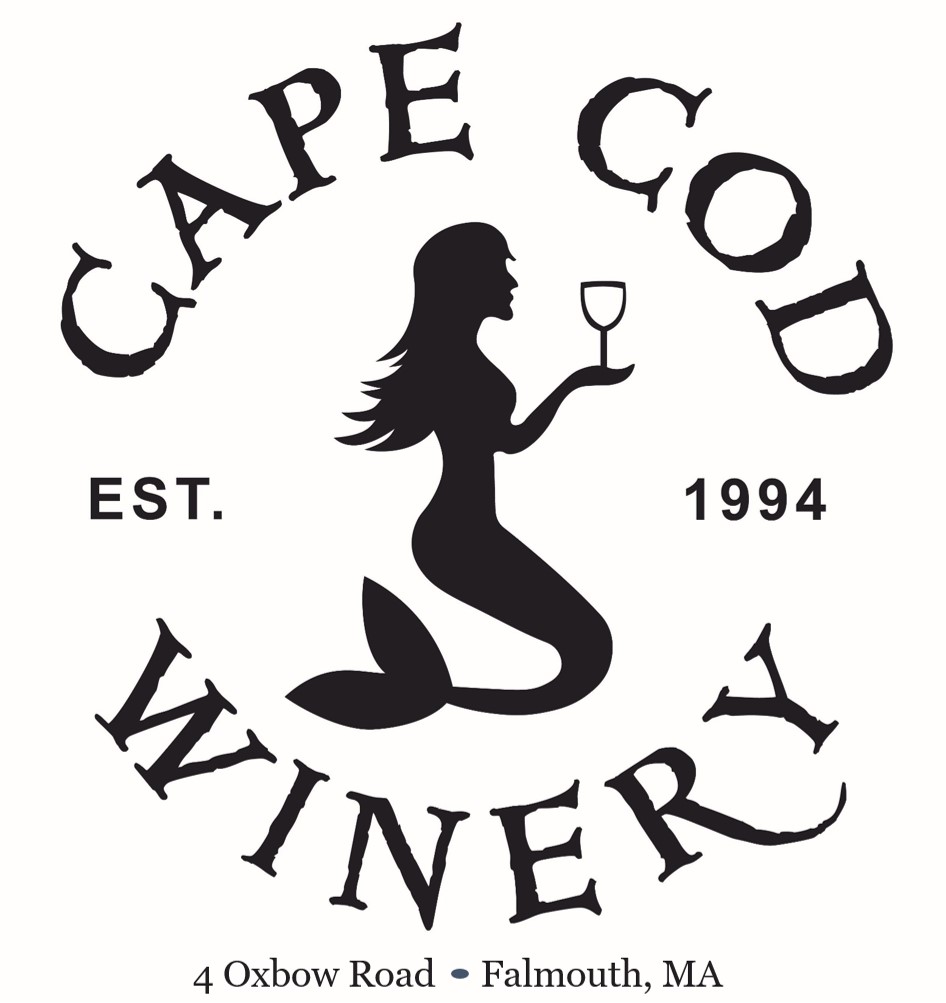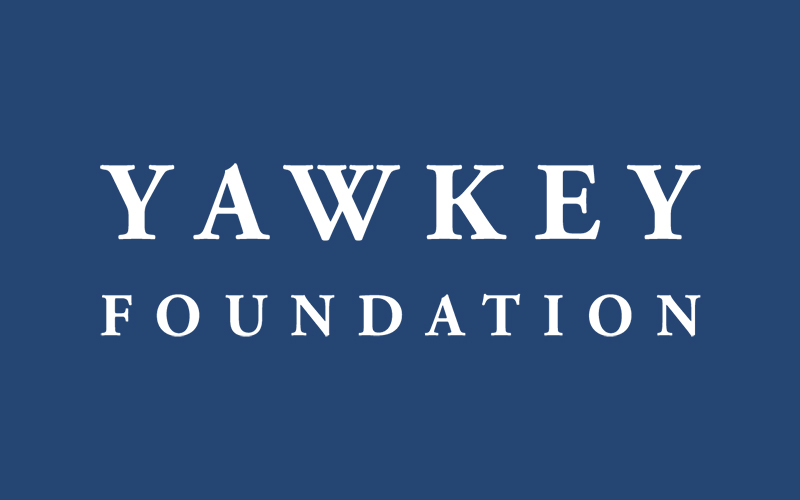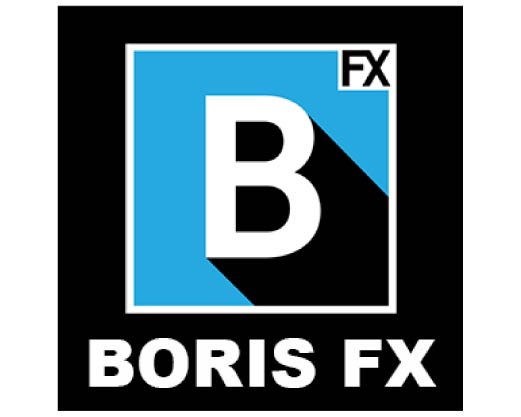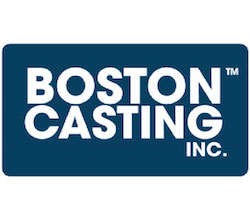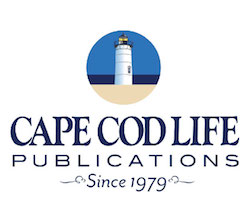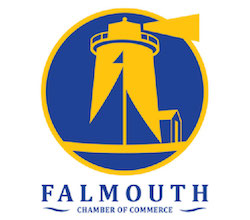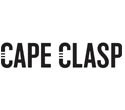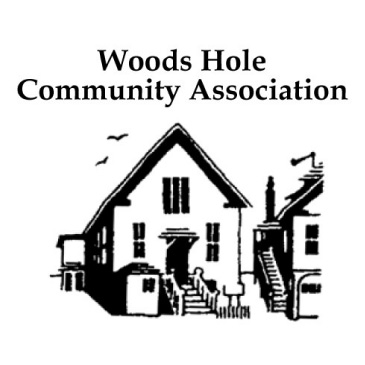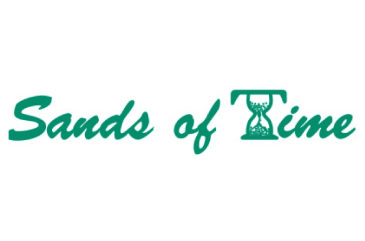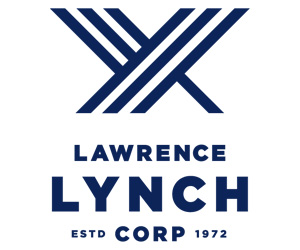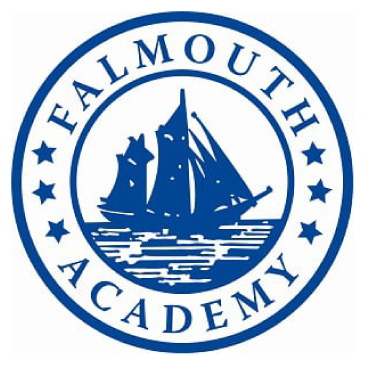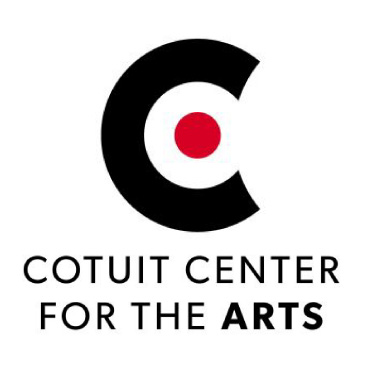The Back Story
We are pleased to present our new series called “The Back Story.” Written by Falmouth writer Sarah Murphy, “The Back Story” gives a more in depth behind-the -scenes look at the people and films that make the Woods Hole Film Festival hum.
Story #1
Back Story: Unreeling the Woods Hole Film Festival
Filmmaker in Residence John Edginton

By Sarah E. Murphy
When award-winning British producer, writer and director John Edginton set out to make a documentary about the late Joe Cocker, he wanted to tell the story of the man behind the music.
“In my opinion, you can’t really separate the two, and I didn’t want to undermine his brilliant talent by glossing over his demons and telling a false story,” Edginton said. “Joe never had any compunctions when it came to talking about himself, so I felt a huge responsibility to be true to him.”
The result is 2017’s “Joe Cocker: Mad Dog with Soul,” (a nod to the singer’s 1970 American tour “Mad Dogs & Englishmen”) which explores the turbulent personal and professional life of the legendary yet unassuming rock/soul vocalist who hailed from Sheffield, England and cemented his celebrity at the 1969 Woodstock Music Festival with his iconic rendition of The Beatles’ 1967 hit, “With a Little Help from My Friends.”
In his role as Filmmaker in Residence for this summer’s 27th Annual Woods Hole Film Festival, Edginton will conduct a Master Class on July 30 at Woods Hole’s Community Hall to share insights into the hurdles of the filmmaking process, and the potential pitfalls of the music documentary genre, drawing on his experiences making films about Cocker and Pink Floyd and Syd Barrett (with Roger Waters, David Gilmour, Richard Wright and Nick Mason); Robyn Hitchcock (with Nick Lowe, Gillian Welch, Peter Buck); and Genesis (with Phil Collins, Peter Gabriel, Mike Rutherford, Tony Banks and Steve Hackett). Edginton has created films for virtually every documentary strand on British television, in addition to HBO, A&E, the Sundance Channel and VH1. As a production consultant, he also serves as a guiding voice, including the BAFTA-nominated documentary, “Freddie Mercury: The Great Pretender.”
“One of the biggest challenges to a music documentary is the fact that you’re making it for the audience and not for the self-interest of the subject,” he said.
Delving into the back story of any topic has always been an inherent part of the process for Edginton, who originally aspired to be a writer, despite his parents’ desire for him to pursue what they considered a safer path.
“My mother and father wanted me to be to follow in the footsteps of my grandfather and be a doctor, but they were unable to convince me of that,” he said with a laugh.
Edginton initially cut his creative teeth in print journalism, but he discovered there were limitations to how extensively he could tackle any given story, while TV enabled him to dig deeper.
By establishing his own company, Otmoor Productions, Edginton has indulged his curiosity in controversial investigative documentaries such as the case of Mumia Abu Jamal and Ted Kennedy’s 1968 Chappaquiddick car crash.
“If I hadn’t initially stumbled into television, I probably would have remained a journalist, and been quite happy. However, filmmaking allows you to get into more detail, which is always more satisfying when you have a sincere interest in a topic,” he said.
Edginton admittedly also stumbles into his subjects, for he never aspired to make films specifically about music. Rather, he is propelled more by the person than the resume, as in the case of Robyn Hitchcock, whom he likens to an old-fashioned troubadour, motivated only by a pure love of music and unpretentious nature.
“Every music documentary has to have a strong story, and in the case of Joe Cocker, it’s the fact that his life was in his voice. Everything he experienced throughout his career – including perhaps the reasons he became an addict – can be heard in that voice,” he said.
It was a life Edginton always wanted to explore – an idea he gave up on when the singer passed away in 2014 – until a few weeks later, when he heard Vic Cocker fondly reminiscing about his younger brother on the radio. After locating Vic on Linked In, Edginton reached out to gauge his interest in a potential film, and received an invitation to his home, where Vic and his wife regaled Edginton with stories. He was soon invited back, this time to meet Cocker’s widow, Pam, who was visiting from Colorado.
“This was about six months after Joe had died, and she was nervous to meet me at first because she thought it might be too soon. But by the end of the afternoon, she had really warmed to the whole idea and was showing me photographs of Joe and his dogs. A few weeks later, Pam sent me an email to tell me she was ready,” he said.
In an effort to avoid what he believes to be a formulaic trap of allowing a music journalist to form an opinion for the audience, Edginton tells the story through archive footage and interviews with Cocker’s music associates, such as former bandmate Chris Stainton, former manager and Woodstock Music Festival founder Michael Lang, and Jerry Moss, co-founder of A&M Records. The film also features a touching interview with Billy Joel, which Edginton managed to conduct in the pre-show frenzy an hour before Joel took the stage at Madison Square Garden, revealing him to be more of a superfan than a superstar.
However it is the unflinching input from Cocker’s brother and wife that allows the audience to see the vulnerable side of the singer, who was a prime target for selfish motives
“They didn’t hold back when they spoke about Joe’s drinking and drug use, and never for one moment did they feel they should control the direction of the film. Whenever Vic comes to a screening, although it’s difficult to watch, he always says it was the right thing to do. You need to know the life of the man,” Edginton said. “I feel so humbled that we were able to tell Joe’s story, and I couldn’t have done it without the generosity of the family.”
Seeing a project come to fruition continues to be a thrill for Edginton, whose advice for aspiring filmmakers is fairly straightforward.
“Find people you like working with who share the same creative sensibility, and find subjects you’re passionate about,” he said. “If you can’t enjoy the job, don’t do it. That’s what I would tell young people.”
Meet John here:
An Evening of Pink Floyd presented by John Edginton
Master Class with John Edginton
Published June 30, 2018. Copyright Woods Hole Film Festival. No part of this story may be reprinted or used in any manner without the prior express written consent of the Woods Hole Film Festival.
Story #2
The Back Story: Unreeling the Woods Hole Film Festival
Opening the Door to Chet’s Last Call

By Sarah E. Murphy
Chet’s Last Call holds a very special place in the heart of Dan Vitale.
The legendary dive bar is where he first performed 35 years ago with his Boston ska punk band, Bim Skala Bim.
Located across the street from the former Boston Garden on the corner of Causeway and Lancaster Streets, on the second floor up a narrow stairway above the old Penalty Box, the endearingly-sketchy dive bar boasted an orange interior and mirrored walls harkening back to its days as a strip club and disco. Named for the irritable yet lovable caretaker, Richard “Chet” Rooney, one of Boston’s youngest club owners at the time, Chet was known for his dedication to providing a venue for emerging talent.
Vitale first visited Chet’s in 1983 to check out a friend’s band with Bim bassist Mark Ferranti. Despite the alcohol and drug-fueled haze and rumors of Boston mafia activity taking place below, the small club would prove to be a welcoming haven for Bim Skala Bim and other fledgling artists including The Dogmatics, The Neighborhoods, Scruffy the Cat, Husker Du and three unknown kids from Brooklyn who called themselves the Beastie Boys.
“Most of the members of Bim Skala Bim were teenagers at the time, and clubs in Boston wouldn’t let you play if you were under age, so having somewhere to perform was a godsend,” Vitale said. “Chet made a big difference in our lives, and for many other bands, because a lot of us got our start there. He was like a punk rock angel.”
Rooney, who had discerning taste and appreciated musical experimentation, was already familiar with Bim Skala Bim, having heard their first single on local radio station WBCN, and liked what he heard.
The invitation was extended and, as the saying goes, the rest is history.
Vitale and many of his peers from the local music scene pay tribute to those halcyon days in Chet’s Last Call: A Story of Rock & Redemption, which he co-directed with his brother Ted Vitale. Edited by longtime friend, Emmy-nominated Jack Sherman, the full-length feature documentary has been chosen as one of five world premieres at this year’s Woods Hole Film Festival with a screening on Friday, August 3 at WHOI’s Redfield Auditorium. The special event is part of the Music at the Festival series, and will be followed by a show at Grumpy’s Pub in Falmouth featuring Bim Skala Bim and The Dogmatics, with several musicians from the film in attendance.
The film explores the very public demons that plagued Rooney who, in addition to possessing a vocal talent he was too shy to share, also struggled with chemical dependency. For just as quickly as Chet and his club rose to local fame, they both disappeared.
Reaching his own perceived rock bottom, Rooney dropped off the scene to seek treatment and subsequently studied to become an alcohol and drug rehabilitation counselor. He would initially answer calls by stating flatly, “Chet’s dead. Call me Richard,” before hanging up the phone. However, friends and musicians facing similar challenges soon recognized him at AA meetings, and just as he fostered their creativity at Chet’s, for the next twenty years, he would go on to make a larger impact by supporting their recovery. Rooney died suddenly in December 2015 at the age of 61, and the close circle of artists, whose friendships and collaborations have sustained over the past three decades, responded in what they believed to be the most appropriate way: with live music.
A few months later in February, and then again in May, fourteen bands including Dogzilla, Bim Skala Bim, The Dogmatics, Pajama Slave Dancers, Liz Borden Group, Moose and the Mudbugs, and The Real Kids, along with several special guests, family and friends, all gathered for “Chetstock,” a memorial benefit at the Once Ballroom in Somerville. The film includes live performances from the shows and interviews with over 40 rock stars, writers, and former employees, along with archive footage of Chet’s. Additionally, it showcases candid conversations with Rooney’s two siblings and his niece and nephew. Created on a shoestring budget for under $20k, half of which was raised through Kickstarter, Vitale called the project a “labor of love” on behalf of all involved.
“We believe this is an important story on many levels and it needs to be told. Everybody is touched by addiction, and often having someone supportive to talk to can make all the difference for people,” he said.
To that end, Vitale hopes the story will be seen by a wider audience, therefore he continues to raise much-needed funds to augment his grassroots and social media publicity campaign. Steve Morse, former staff critic at the Boston Globe, who now teaches rock history at Berklee College of Music, credited the film for exploring an essential chapter in the city’s musical past.
“Boston rock history isn’t complete without a look at Chet’s Last Call. This head-spinning new film is a raucous, fast-paced tribute to him and the underground, anything-goes music of the time,” he said.
Vitale is grateful to Rooney’s family for their willingness to participate, for after initially agreeing to be involved in the project, they later expressed reticence.
“I told them I really didn’t think we could make the film without their blessing, but then they saw some early footage from the interviews, and how Chet changed so many lives, so they wanted to be part of it, and they wanted us to be honest about his illness,” he said.
Sarah Henderson responded by expressing the family’s gratitude for telling his story.
“‘Chet’ was my uncle and godfather, and he was wholeheartedly dedicated to the Boston music scene. I got an early introduction to it at the age of 12,” she said. “I am thankful his legacy of music is still alive and I thank the filmmakers from the bottom of our collective heart for what they are attempting to do.”
Throughout the challenges and financial hurdles of making the film, Vitale has relied on an inspirational bracelet given to him by a friend, which he put on two years ago and never removed.
With just one word, the reminder provided encouragement when Vitale needed it most: Persistence.
Visit here to check out a preview of “Chet’s Last Call: A Story of Rock & Redemption” or to make a donation.
Related links:
Chet’s Last Call at the 2018 Woods Hole Film Festival
Friday Night Party featuring Bim Skala Bim
Published July 9, 2018. Copyright Woods Hole Film Festival. No part of this story may be reprinted or used in any manner without the prior express written consent of the Woods Hole Film Festival.
Story #3
Back Story: Unreeling the Woods Hole Film Festival
Behind the Scenes with Jane Julian and Nina Adams

By Sarah E. Murphy
For Woods Hole Film Festival documentary programmer Jane Julian, it’s less about the topic and more about the delivery.
“No matter what the subject is, a good documentary must have a strong story and compelling characters. I need to be able to find somebody in the film to connect with,” she said. “I can usually excuse poor production value if the story is well-defined.”
Inattention to detail, however, is one thing Julian can’t look past, so word to the wise, be particularly mindful of her biggest pet peeves – anachronisms and bad wigs.
Although Julian fell in love with film watching Ben Hur at the drive-in as a child, her passion eventually shifted to documentary, which she has pursued as programming director for the Port Townsend Film Festival and Doctober in Bellevue, Washington. Festival season is a pleasant whirlwind for Julian, who resides in Durango, Colorado and works as a documentary consultant for Sundance Film Festival, Boulder International Film Festival, Toronto’s Hot Docs Film Festival, and Mountainfilm in Telluride, just to name a few.
Julian believes the documentary genre has become more popular with viewers in recent years, partly due to increased access through Netflix, Hulu and Amazon, and pointed to the box office success of RBG and Won’t You Be My Neighbor.
“Personally, I find biographies fascinating because I’ve always been curious about people and what makes them tick,” she said.
One of the things Julian enjoys about Woods Hole is the breadth of topics, which this season runs the gamut from the world’s toughest horse race in Mongolia (All the Wild Horses), to the emotional journey of a litter of puppies training to be guide dogs (Pick of the Litter), to the debut of an Australian milliner at New York’s Fashion Week (MadHATtan).
While it’s impossible to choose favorites, Julian is particularly excited for Afghan Cycles, one of many films in this year’s festival which highlights Muslim culture. Directed by Sarah Menzies, the story revolves around a generation of Afghan women challenging gender and cultural barriers using the bicycle as a vehicle for freedom, empowerment and social change, putting their lives on the line while doing so.
According to Julian, Inventing Tomorrow offers much-needed hope in a negative time as it follows the highest convening of high school scientists from around the globe at the Intel International Science and Engineering Fair (ISEF), while Capturing the Flag follows a group of volunteers who travel to Cumberland County, North Carolina to expose voter suppression in the 2016 US election.
Julian believes another reason for the genre’s popularity is a thirst for knowledge.
“One of the key things about the time we’re living in is there are so many attacks on the media. Therefore, documentaries are becoming even more important as a way to educate the public,” she said.
Woods Hole Film Festival Shorts programmer Nina Adams starts thinking about the summer in December when the submissions start to trickle in.
“What I’m looking for is a combination of things, but particularly something that takes an idea and says it in a unique way,” she said. “I’m also looking for something that grabs me, whether it looks different or sounds different.”
And much like a poet who relies on the economy of words, the impact of the filmmaker’s message is also defined by brevity.
“I love shorts because they tell a story succinctly, they engage you quickly, and they resolve it in under 30 minutes. It’s a remarkable talent, and it’s very hard to do,” Adams said.
But it doesn’t matter how profound the message is if it can’t be heard, therefore quality control is essential.
“There are certain technical criteria that have to be met with me. The sound must be crisp and clear. If there is background music or ambient sound, it has to be really well done,” Adams said. “There must be a meeting of content and technical quality, and the technical choices have to make some connection with the story.”
Growing up in New York, theater and film has always been a passion and an avocation for Adams, who moved to New Haven, Connecticut in the 1960s, where she remains involved in local theater. After filing out a volunteer form at the inaugural New Haven Film Fest, Adams soon found herself overseeing the entire event, until it eventually folded in 2005 due to lack of funding.
Since then, she has been lending her talents to Woods Hole, and believes being open to experimentation is key to being an effective programmer. Rather than designate the categories each year, Adams allows the films to dictate the direction.
“I don’t start with any particular themes in mind. Instead they evolve. Perhaps it’s a small group of films about urban and international violence and how people are dealing with it. Over time, I begin to group them in my mind. As more submissions come in, I start to expand the category or create a new one,” she said. “However, it’s very important to put films together that somehow create an experience of totality, rather than just one short after another.”
To that end, thinking outside-the-box is a signature aspect to Adams’ process.
“I don’t always put films together that are the same genre. If the topic is women emerging, I love to mix things, such as a serious film about women’s roles, followed by a comic piece and an animated piece, if it somehow fits. Therefore, all the shorts programs are a combination of all these things, which is quite unusual for film festivals,” Adams said.
“In the end, the audience is seeing them all juxtaposed and talking to each other and, when you’re successful, it becomes a bigger story.”
Published July 11, 2018. Copyright Woods Hole Film Festival. No part of this story may be reprinted or used in any manner without the prior express written consent of the Woods Hole Film Festival.
Back Story: Unreeling the Woods Hole Film Festival
In the Booth with the Tech Crew: John Gamache, Jay Sheehan and Stone Dow
By Sarah E. Murphy
When John Gamache joined the Woods Hole Film Festival as technical director a few months before the 2015 event, he learned firsthand that the coastal village setting is unique for several reasons, including limited internet resources.
“Logistically, it can be an interesting process. We have zero bandwidth in Woods Hole when it comes to WiFi, so when we need to download a film we have to do it at home where we have more reliable service,” he said. “It’s a Woods Hole thing – it’s not an office thing. That’s one of the challenges of being in a little seaside community.”
Additionally, the five venues each possess different characteristics, therefore advance planning is key to mapping out the screenings, which are held at WHOI’s Redfield Auditorium, MBL’s Lillie Auditorium, the old Woods Hole fire station, and Falmouth Academy. Due to technical limitations, the Community Hall is now used strictly for staging workshops and panels.
“All of the buildings are different, so they need to be configured differently. Each one has specific needs for certain equipment. We can’t do what we do in one venue and easily transfer it to another,” Gamache said. “For instance, sub-titles can be very difficult to see in certain buildings, so we have to pay attention to those details when we’re creating the schedule.”
Prior to his second season, Gamache also took on the role of of associate director, in addition to his other festival hats, such as graphic designer and T-shirt designer. Since then, the festival has benefited from some pivotal changes. Redfield Auditorium was upgraded for the 25th Anniversary in 2016 in with a new screen, a digital cinema projector (DCP) and a 7:1 surround sound system, and just last summer, Falmouth Academy opened the doors to the new Simon Center for the Performing Arts.
“MBL also did a big upgrade of their projector and sound two years ago, but before they did, they asked what we needed in order to make the venue more usable and to give people a better experience,” he said.
According to Gamache, the DCP in particular has been a game-changer for WHFF.
“Prior to the upgrade at Redfield, we had to rent equipment, which was a big expense, and it still wasn’t ideal. Having the technology in place provides a lot more opportunities to us as a festival and also allows the audience to see the films as they were intended to see,” he said.
As a board member and technical consultant for the past seven years, Jay Sheehan is part of the year-round planning process with Gamache and Judy Laster, WHFF founder and executive director. However his work as a projectionist for Redfield Auditorium kicks into high gear in the days leading up to the event when he begins quality control for the venue, which can include testing up to thirty films which will be screened over the eight-day period.
“I have to make sure they play back properly and that the sound levels are correct for the room because it varies from film to film,” Sheehan said. “The projector is calibrated for typical feature films, but we can’t change any of the levels on the video itself if there is a problem during screening because that would cause issues for other films.”
And like anything in life, there are no guarantees, even with upgraded equipment.
“It’s technology, so something is always going to break at some point in time. The DCP is based off a computer server, so if there’s an issue with that, there’s a lot of trouble-shooting involved and you essentially have to stop the film,” Sheehan said.
Another mundane yet vital consideration is maintaining a comfortable room temperature in the venues during the late summer festival screenings.
“If the air-conditioning doesn’t work, that can turn into a much larger problem when you have a sold-out audience of over 200 in Redfield and 500 in Lillie,” he said. “It’s never not going to happen.”
This will be the first full season for video and production coordinator Stone Dow, who joined the team this past winter and hit the ground running by lending his talents to the Film Falmouth screening series in an effort to understand some of the location logistics during a more low-key event.
“We have a lot of talented projectionists and venue personnel who can rise to the occasion, but
generally they’re involved in the weeks right before the festival. Judy and John wanted to have someone else on board who would be familiar with the media beforehand, in addition to another set of eyes and ears to make sure we don’t have any technical hang-ups,” he said.
The challenge was a welcome one for Dow, who has worked for the past several years as a consultant for TED Conferences.
“There are so many elements that go on behind-the-scenes to make an event look like a flawless run. Having another person interested in getting into all the details of that has been an important pre-production effort this season, for it allows us to have an idea of what the festival will look like well beforehand,” he said.
Dow also spent the past few months watching submissions as part of the review committees for shorts and narratives. And although he has attended the festival in the past, dating back to a screening at the former Nickelodeon Cinema in Falmouth, he’s looking forward to his first year being in the thick of it all.
“I’m really excited to be part of the whole week,” Dow said. “There are many passionate, dedicated people who are working hard to broaden the audience and also really serve the community that has supported this festival for so many years.”
Published July 20, 2018. Copyright Woods Hole Film Festival. No part of this story may be reprinted or used in any manner without the prior express written consent of the Woods Hole Film Festival.
The Back Story:Unreeling the Woods Hole Film Festival
PLAYING FRISBEE IN NORTH KOREA
A Conversation with Prodcer and Director Savanna Washington
By Sarah E. Murphy
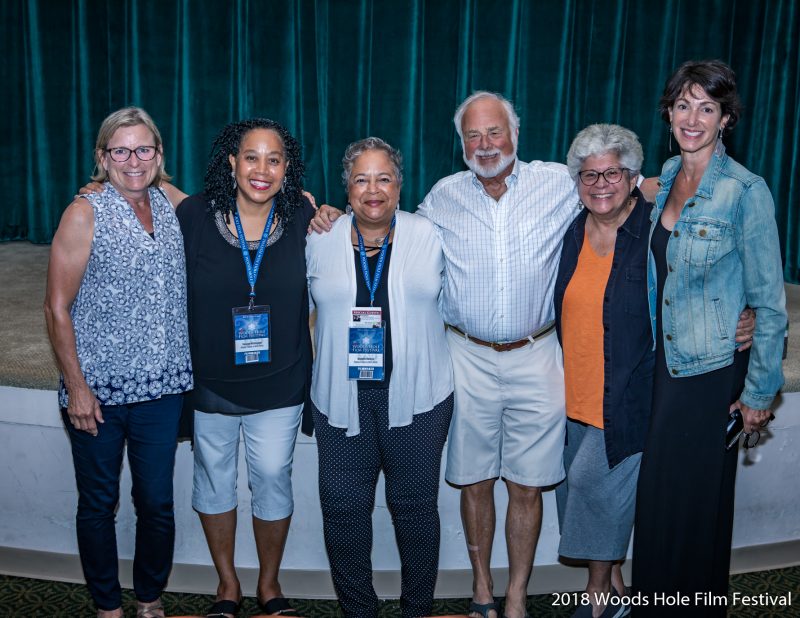
[2018 Woods Hole Film Festial/Poto E. Gene Chambers]
“My father was very strict, and we were expected to take turns doing the dishes, but I didn’t think I should have to do that, so I wrote my first protest song when I was seven or eight years old boycotting the pots and pans,” she recalled with a laugh.
“He didn’t agree with me since I was eating at his table, and he was absolutely right, but he liked that I stood up for myself, and I loved that he heard me. I guess I’ve always had that streak in me.”
As a community activist and educator at The New School for Social Research and City University of New York, Washington has used her craft in an effort to effect social change while advocating for those without a voice, a passion which led to her latest project, the first documentary from inside North Korea produced and directed by an African-American female filmmaker. “Playing Frisbee in North Korea,” by Aardvark Alley Films, make its worldwide debut at this year’s Woods Hole Film Festival on Wednesday, August 1 at 7:30 PM in the Marine Biological Laboratory’s Lillie Auditorium, providing an authentic, life-on-the-ground perspective of the lives and struggles of the people of North Korea.
The impetus for the film began when Washington was a graduate student at City College in 2009, the first filmmaker to be awarded a Colin Powell Graduate Fellowship. While studying Korean re-unification, Washington was surprised to learn the repercussions are still felt today from the North Korean famine which spanned 1994-1998.
“The North Koreans are unable to get food aid for even their most vulnerable – including infants, the elderly and lactating mothers,” Washington said. “I couldn’t believe there was no political will to feed such a needy population. Who are we as people that we allow this to happen?”
In response, Washington offered to create a short documentary to highlight the humanitarian crisis and was awarded a production grant from the Powell Center’s Korean Issues & Insights Endowment. However, after extensive research, she hit a roadblock when searching for archive footage and was forced to put the project on hold until a friend put her in contact with a North Korean source seeking anonymity. The project took on an expanded life in 2013, when Washington made what arguably could be described as the trip of a lifetime on a sanctioned tour of North Korea, far from the landmarks of Pyeongyang to the outskirts where the famine had hit hardest. The excursion was led by Young Pioneer Tours, the same company that led Otto Warmbier, the American student who died shortly after being released from prison for stealing a propaganda poster from his hotel.
For Washington, crossing the bridge from China to North Korea was like a scene out of The Twilight Zone.
“It’s very surreal. Everything is locked in time. Electricity is inconsistent and running water is scarce. They still use oxen to till the fields. It’s like stepping out of the 21st century into 1953,” she said.
After a frightening altercation in which she was admonished for filming on the first day, Washington smoothed things over with a carton of Western cigarettes, and proceeded to capture daily life in North Korea by shooting undercover in prohibited areas for the next week. Barred from outside news, with no internet access and limited phone access within the country, the people of North Korea know only what their government tells them – that the U.S. and its sanctions on North Korea are responsible for their hardship. Therefore, aggressive attempts were made to keep the tour group separated from the local population, until one of the travelers pulled out a frisbee, leading the minders to lose control of the group and the village.
The innocuous interaction that ensued is a metaphor for both the film and Washington’s philosophy on humanity.
“I am of the belief that we are all more alike than we are different, and that really deepened when I was there. The North Koreans are people just trying to live their lives every day under the most extraordinary circumstances,” she said. “For Americans, we have no idea what it means to not be able to use the internet and look up information at will. It’s difficult to grasp not having that bit of freedom.”
As an African-American and a woman, Washington has faced her share of challenges in life, which she believes makes her more empathetic and eager to advocate for others. She also credits her childhood during the economic boon in Detroit with contributing to her world view.
“I grew up in a really good time in the city’s history. My grandparents moved up from the South for the manufacturing jobs and lived right next door. People were able to thrive on a blue collar salary. They could buy a little house and raise a family. Everyone had security back then, and I want that for other people,” she said.
Washington is encouraged by the feedback she has received for the movie, which she will unveil this fall at the Global Peace Film Festival and the New York Korean Society. And although Washington once lived in Boston, this will be her first visit to Woods Hole, where she is eager to debut the film, and underscored the power of art as education.
“One of the areas where segregation really succeeded is it kept people apart, which led to us misunderstanding each other. Part of my job as a filmmaker is to help us introduce ourselves,” she said. “A lot of the hatred we see in our world today is the result of mistrust. We can do better collectively than fearing each other apart, and that’s what I hope this film helps to do in a tiny way.”
The Back Story: Unreeling the Woods Hole Film Festival
Anne de Mare: Shining a Spotlight on Voter Suppression
By Sarah E. Murphy
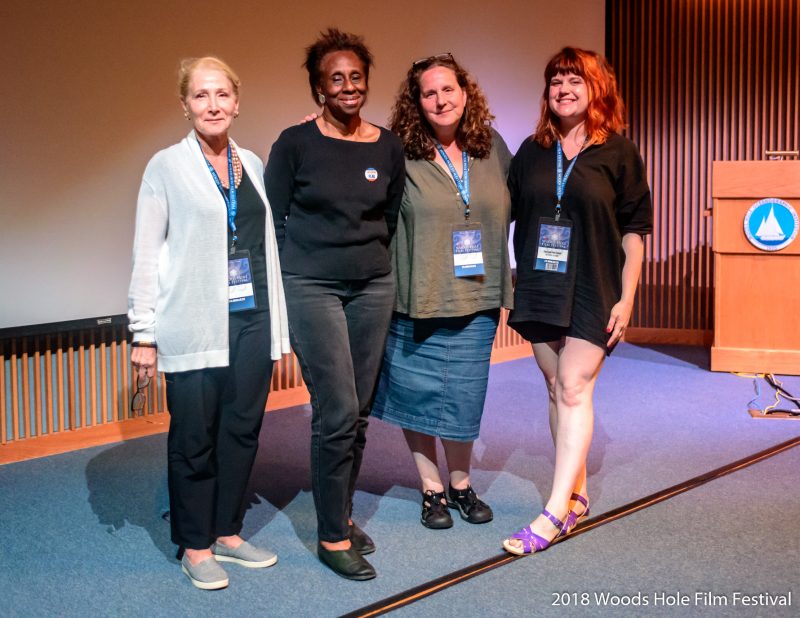
[2018 Woods Hole Film Festial/Poto Kris Hughes]
“Our original goal was to create a 10 or 15-minute piece about civic engagement, but I always say that when it comes to documentary, you have to tell the story that opens up to you, and it’s usually not the story you set out to tell,” de Mare said. “A feature emerged unexpectedly as a result of the intimacy we were able to get, with the subjects and on the ground, in addition to what happened at the polls.”
“Capturing the Flag,” a film by Providence Productions and Election Protection LLC, will be screened in WHOI’s Redfield Auditorium on Wednesday, August 1 at 6:45 PM. The movie follows four political activists and close friends who travel to Cumberland County, North Carolina on the eve of the 2016 US election in an effort to expose the voter suppression for which the area is infamous. The group is spearheaded by Laverne Berry, an attorney who is also one of the producers.
“People volunteer in a lot of ways,” Berry says in the film. I work for everyone to be able to vote.”
de Mare reunited for the project with producer Elizabeth Hemmerdinger, with whom she collaborated for “The Real Rosie the Riveter Project,” a collection of filmed oral histories for the NYU archives.
One of the most eye-opening revelations for de Mare while filming “Capturing the Flag” was the subtlety of modern-day voter suppression.
“We’ve all seen the classic images from the Civil Rights Movement. Back then it was a very physical obstruction with dogs and water hoses, and people being prevented from voting in obvious ways,” she said. “The suppression of this day is intensely insidious. It’s legislated and it’s institutionalized. It’s hard to pin down, and things that are hard to pin down are really hard to fight.”
de Mare underscored the fact that race is not the only contributing factor.
“We also have a large disenfranchisement in this country of college students, and a lot of young voices are silenced by misinformation and changing laws. In many states, a college ID isn’t enough to vote and often students don’t realize they have to re-register if they attend school in a different state,” she said. “One of the biggest problems in North Carolina in 2016 was that the law kept changing, right up until the Friday before the election when a ruling dramatically altered what would happen at the polls. When you have these ever-changing laws and political districts, it makes it hard, not just for the voters, but for the election officials who are trying to enforce them. We should be making voting easier for people, not harder.”
Securing funding for the film proved to be challenging due to the political implications, therefore support came from the Ben & Jerry’s Foundation and several family foundations. de Mare credited Hemmerdinger with her unwavering commitment to seeing the project to fruition.
“Elizabeth was incredibly brave and visionary to keep this film going when it turned out to be so much bigger than what we set out to do. It’s quite a lot to find yourself suddenly making a feature film when that wasn’t your intent,” she said.
One of de Mare’s other goals was to tell showcase the average Americans who quietly do extraordinary things, all in the name of democracy.
“I wanted to tell a different story about politics from the bottom up, because it really does happen at the polls, and I believe the role of the citizen has been so diminished in the media. People don’t feel as if their vote has power, and they don’t feel as if they have a political voice, but they do,” de Mare said. “I wanted to make something to serve as a reminder as to why the power of the vote is so important, why we have to hold on to it, and why we have to help each other.”
“Capturing the Flag,” made its worldwide debut in April where it all began – in North Carolina – at the 22nd Annual Full Frame Documentary Film Festival in Durham.
“We were a little nervous to bring it back to North Carolina, but we sold out their largest venue. The film was incredibly well-received and sparked an extraordinary discussion,” de Mare said.
Although the project is now complete, the work continues. Fundraising efforts are underway for “Capture the Campus,” a college tour aimed at sharing the movie with first-time voters.
“We’re stumbling along hand-to-mouth but everyone involved in every realm of this film feels the imperative need to have these conversations about voting and democracy, and they’re working overtime to get it in front of as many audiences as possible, particularly states that have a history of conflict around their voting laws,” de Mare said.
The flagship event at NYU on October 1 will feature a screening and discussion with Rev. William Barber, a Protestant minister and political leader from North Carolina, who is featured in the film and offers the reminder, “Nobody would fight this hard to take something from us that wasn’t powerful.”
The experience of making the film has been rewarding for de Mare an an artist and an American.
“It’s been a reminder to me that voting is central to everything. Every aspect of our public life is legislated, and we have a voice in the legislature, but we have to take advantage of it,” she said.
For information about hosting a screening of “Capturing the Flag”, visit capturingtheflag.com.

